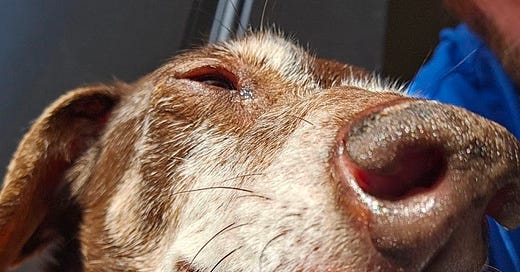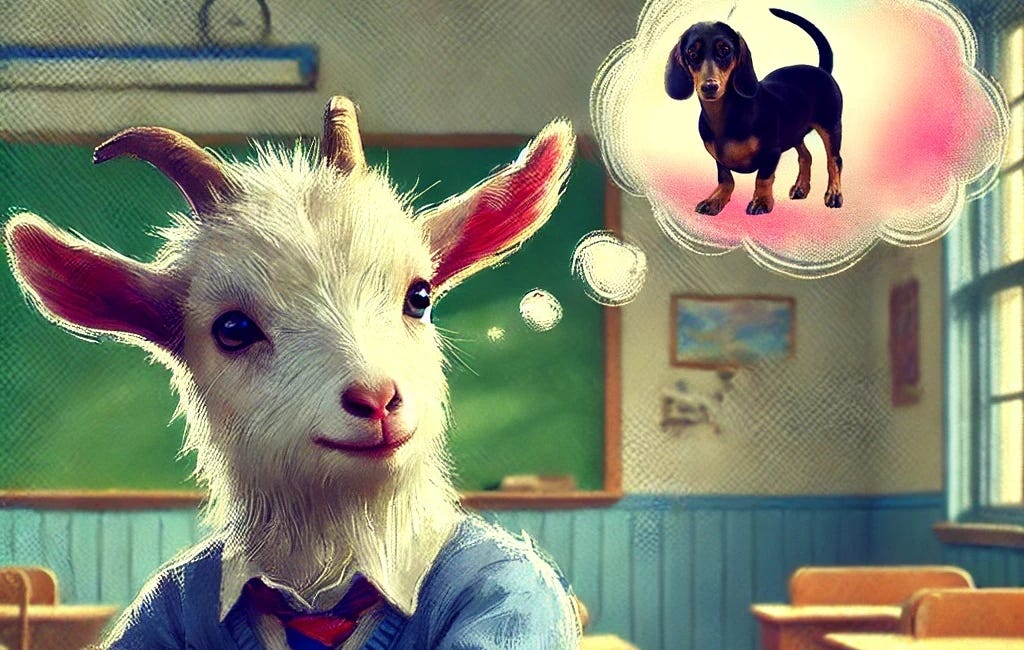Ever watch a puppy chase their own tail?
It’s pretty cute! It’s also really silly.
Like, why do they do that? Why chase your own tail? Don’t you realize that’s a part of you, you dummy?
These are the questions that zipped through my mind a few weeks ago, minus the dummy part. That’s when I decided to investigate this important matter.
Sincerely, I thought it was a really good line of thinking, though. Here’s why: I’ve been thinking about perception and cognition a lot lately, and how there’s sort of a fine line between those two areas. There’s also the unsettling observation that the only way we know anything at all about the outside world is because of our senses, and we know full well that they can be used to trick us.
What is a better example of where this line might be drawn than when a dog goes after their own tail as though it were their worst enemy?
If you want to make the point that a dog rather enjoys playing from time to time, and this seems a lot like playing and less like attempted tail-murder, you’d be well within your rights to do so. In response, I might ask why in the world it should be fun to chase after part of you, especially if you know that’s you over there.
We land at a place that’s interesting not only for dogs, but also for humans: entertaining ourselves with our own bodies. If you’re already certain that this is headed to Fast Times at Ridgemont High bathroom territory (doesn’t anyone knock anymore?!?), keep in mind that I have been taking great pleasure in cracking my knuckles since the late 70s.
What’s going on here, really? Why do we enjoy… erm, “cracking our own knuckles” so much? Why do dogs like to chase their own tails?
Dogs are smart. Sincerely, I’m pretty well convinced that Dink-Dink is in charge of us, and it’s certainly not the other way around.
They know full well that their tail belongs to them, and they certainly don’t hate it… but it sure does seem as though they forget about that for just like a split second, doesn’t it? In a way, that’s really what’s happening here.
We have this idea of us and the rest of the world. There’s some kind of very distinct boundary where you stop and everything else begins, but the truth is an awful lot more gray than that. There’s this very strong feeling that we’re one contained unit, and there’s just one of us in here, running the show. You and I almost certainly feel this way, as though we have agency and control over our bodies.
The reality is that we are a collection of disparate individual cells, each very much focused on doing its own thing in that one particular moment. Seriously, all a cell “cares” about is whatever is right in front of it.
To me, the more curious and wonderful aspect is how any of this is coordinated at all. Our seeming ability to control trillions of cells all at once might blow our minds, if we didn’t experience it every day.
Back over to “knuckle cracking” and tail chasing.
Clearly, we aren’t as integrated as we might have thought. Parts of us kind of do their own thing, and we take advantage of this by surprising ourselves from time to time, in a manner of speaking.
You’re probably very familiar with the chasing your own tail metaphor. This is normally used to point out how we are all capable of doing repetitive work with no reward, just repeating the same loop over and over again. It implies futility and wasted time and energy.
But the dog isn’t wasting their time when they chase after their tail, and we’re not wasting our time when we crack knuckles. Instead, this little activity can provide mental stimulation and provide a little entertainment.
It pays to play, too. Play is how you get better at things you’re not ready to practice yet, although practice can be made into play too.
However, the important thing about a dog chasing their own tail is that they stop doing it after a while. When we humans warn us against chasing our own tails, we assume the person doing the chasing isn’t aware of this activity, or if they’re aware, they aren’t happy about it.
Doing a futile activity for fun is called play. Doing a futile activity in a repetitive doom loop is self-destructive. It’s really important not to get these two situations mixed up!








Some people out there "like" their own Facebook posts.
Just saying.
I know at least one puppy who doesn't chase her tail, but, rather, employs it as one of her vast range of super-powers: https://davidperlmutter.substack.com/p/who-will-the-next-fool-be